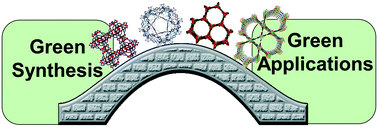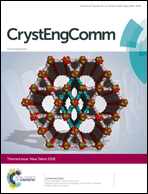Green applications of metal–organic frameworks
Abstract
The field of green chemistry, governed by twelve principles, seeks to provide guidelines for developing materials, processes and systems that mitigate or eliminate the use and generation of hazardous substances. Comprised of metal nodes bridged by organic linkers, metal–organic frameworks (MOFs) are an intriguing class of 2D and 3D hybrid porous materials that have been studied for various environmentally conscious applications. This highlight article discusses the study of MOFs in traditional green chemistry applications such as catalysis, and solar energy conversion and storage, as well as other green applications that fall outside the scope of green chemistry such as air and water pollution remediation.

- This article is part of the themed collections: Editor’s Collection: Zirconium based MOFs for catalysis, 2018 Highlight article collection and CrystEngComm New Talent


 Please wait while we load your content...
Please wait while we load your content...